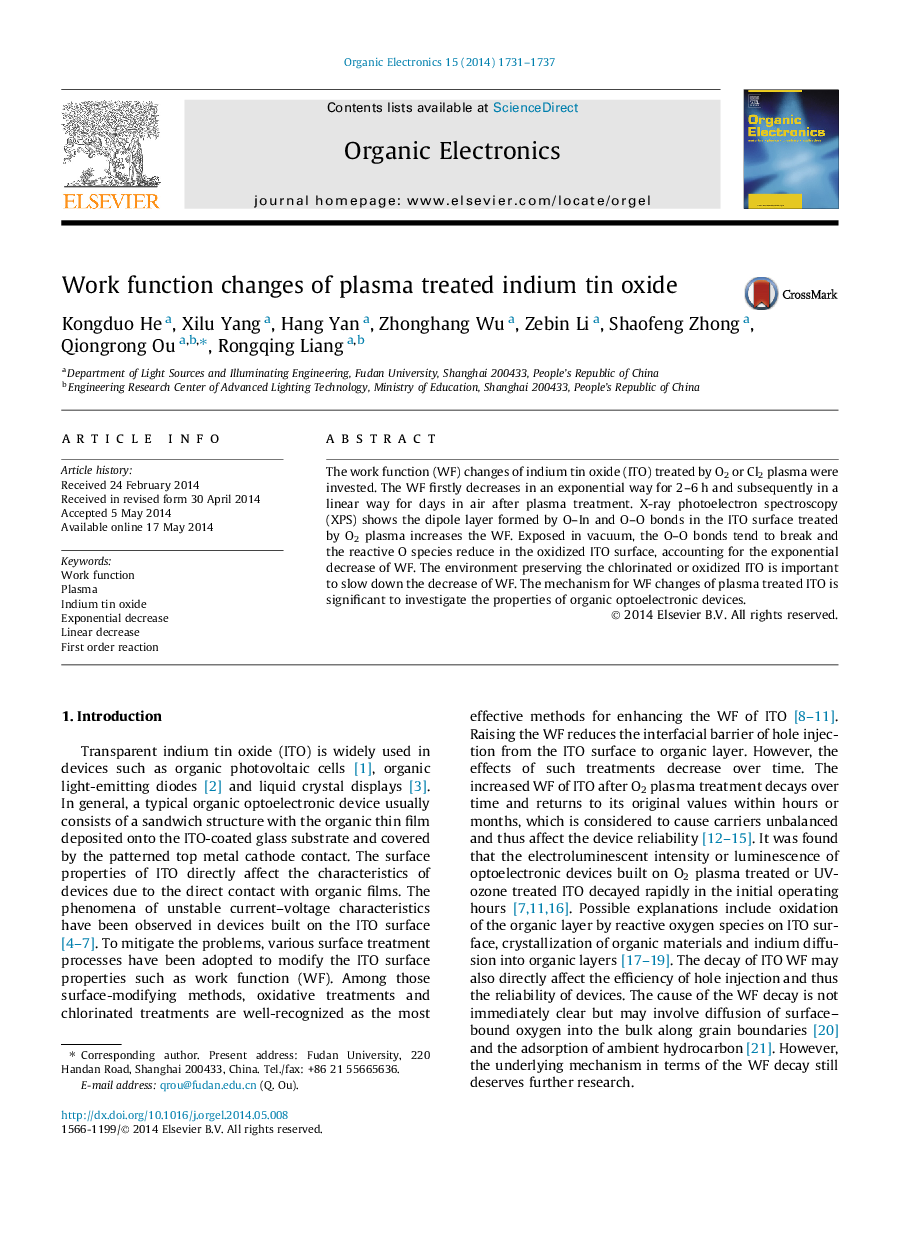| Article ID | Journal | Published Year | Pages | File Type |
|---|---|---|---|---|
| 1263816 | Organic Electronics | 2014 | 7 Pages |
•The WF decrease curves can be fitted by an exponential plus a linear function.•The WF first decreases exponentially for 2–6 h and then linearly for days.•The reactive O–O bonds break rapidly, leading to the exponential decrease of WF.•The stable O–In bonds account for the remaining increment of WF.•Preserving the O2 plasma treated ITO in oxygen can delay the decrease of WF.
The work function (WF) changes of indium tin oxide (ITO) treated by O2 or Cl2 plasma were invested. The WF firstly decreases in an exponential way for 2–6 h and subsequently in a linear way for days in air after plasma treatment. X-ray photoelectron spectroscopy (XPS) shows the dipole layer formed by O–In and O–O bonds in the ITO surface treated by O2 plasma increases the WF. Exposed in vacuum, the O–O bonds tend to break and the reactive O species reduce in the oxidized ITO surface, accounting for the exponential decrease of WF. The environment preserving the chlorinated or oxidized ITO is important to slow down the decrease of WF. The mechanism for WF changes of plasma treated ITO is significant to investigate the properties of organic optoelectronic devices.
Graphical abstractFigure optionsDownload full-size imageDownload as PowerPoint slide
